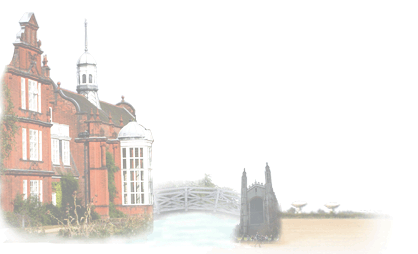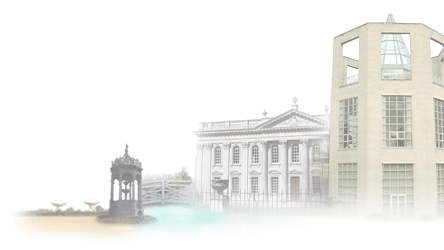A Cambridge perspective
on the digital world



January 2005
The Asian tsunami was a tragedy on an unimaginable scale. But the days following the disaster have shown the commitment of millions around the world to do something about it, and modern media and communications have given them a way to do it.
The response of millions to the tsunami was to pick up their phones or log onto the Internet, and donate money to funds hastily set up to help the relief effort. In less than a week, the British public gave more than £60 million – outpacing in both scale and speed the government's official contribution. This response has been mirrored in countries around the world.
Twenty years ago, it took a group of dedicated musicians, the Band Aid record and the Live Aid concert to mobilise public response to a humanitarian emergency. This time, the response was organised virtually overnight, and charities started spending the money within days.
The response to the tsunami demonstrates just how much modern media and communications – working together in unprecedented ways – have changed the way the world operates. As well as providing direct help, the response has sent a clear signal to governments about what their electorates expect them to do. Governments have responded, dramatically increasing their commitment to help.
Traditional media reporting – of wars, for example – has always been a passive experience. But unlike war, the tsunami was something that ordinary people could do something about, rather than just sitting on the sidelines and watching helplessly.
After reality game shows and two decades of telethons, people understand the possibilities of interaction, and they responded in millions. It helped that those involved were not just anonynous victims in far away countries, but people who could be given a face and a name by 'instant' news reporting; and that tourists from the developed world were caught up side by side with local people. It helped that the tragedy occurred at Christmas, when people are favourably disposed to think of others. Whatever the reasons, the response was unprecedented; and it may change, perhaps forever, the way we think of and respond to disasters of this kind.
After the tsunami and the unprecedented international effort to respond – with former enemies working side by side to address a common problem – it will be more difficult to dismiss humanitarian issues on the other side of the world as 'somebody else's problem'. An earthquake in mid-ocean, affecting countries across half the globe and rich and poor alike, puts national boundaries in perspective. At the same time global media have been reducing the communication distance between people anywhere on the globe to virtually zero. Something had to give, and on Boxing Day it did. People around the world are directly involved in this tragedy in a way that has not happened before. The TV screen is no longer a stage, but a window on somewhere else in the world, where there are people a lot like us.
A combination of media was pressed into service to report and respond to the disaster. Adding to the instant TV reports from correspondents on the spot - recorded using digital news gathering equipment, and transmitted via satellite – the Internet was quickly brought in to help track and reunite missing relatives. Some people first heard news of their relatives' survival by text message – the only medium working effectively in some of the devastated areas. The BBC message board was pressed into service to help connect people. Web sites and databases were created to help with identification and tracking. A Hong Kong company has offered the use of image processing software on the Web, to help identify people from their photographs.
'Convergence' between media, IT and communications – all now based on the common technology of the electronic digit – has been talked about for more than a decade. The response to the tsunami demonstrates convergence in action, not as a theory but as something that can affect, and even save, real lives. By creating awareness, mobililising a response, collecting contributions, connecting people, and organising resources, converged technology is having a profound impact, one that is not confined this time to entertainment and game shows.
As the relief effort develops, the combination of Web and mobile communications will provide the most effective way to track the hugely diverse effort of reconstruction and development, even without the presence of reporters in every town and village. In the past, promised aid has not always turned up, has been diverted, or misapplied. Converged media and communication provides an effective way of communicating and monitoring the use of aid. Web logs (blogs), digital cameras and camera phones now enable 'instant' reporting on the ground from any project. Reports placed on the Web can be seen by anyone who wants to know how their money is being used.
Natural disasters cannot be prevented. But there is a great deal that can be done to minimise the loss of life, and maximise the response – both short and long term – to an emergency of this kind. A tsunami alert system, as used effectively in the Pacific, will be a good start. But other needs – once the basic problems of clean water, food and housing have been solved – will include rebuilding economic activity in areas where towns and villages have been flattened, and people have no more than the clothes they stand up in. Some creative approaches to financing new economic activity will be needed, alongside major rebuilding programmes.
The response to the tsunami has demonstrated the real power of converged media and communications. But if we can do this, what else can we do? Some astonishing goals have been proposed, such as the eradication of global poverty. This will only succeed if it ceases to be a pet project of politicians, and become something we all sign up to. But goals as ambitious as this are now conceivable, at least.
There are many lesser things that converged media and communications can also do, if the will is there to use it. Achieving the commercial goals of businesses for example, or meeting the needs of local communities, is simple by comparison. We have the tools; sometimes it takes the shock of an emergency to take off the blinkers of habit and show what can actually be done.
©2005 Mediation Technology
